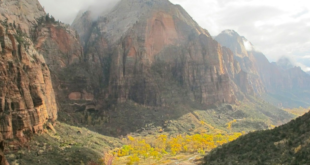Article by Jude Limburn Turner
When the finest trekking holidays in the world are discussed, there are plenty of strong contenders. The Inca Trail to Machu Picchu, the legendary Tour du Mont Blanc, and the trek to Everest Base Camp are amongst the most famous walks in the world, but veteran walkers often point to another, perhaps lesser known trek as their personal highlight – the Annapurna Circuit. This epic circumnavigation of the Annapurna Massif visits an astonishing range of highlights: high mountain passes festooned with prayer flags, dramatic deep gorges, remote Buddhist temples and picturesque Nepalese farming villages scattered along the route. It is often said to be the best trek in Nepal – perhaps even the best in the world.
Sights of the Annapurna Circuit
The central highlight of the Annapurna Circuit is the Annapurna Massif itself. This stunning mountain range is composed of seven major peaks, and towering above them all is Annapurna I (8,091m), the tenth highest mountain in the world. One of the great pleasures of the Annapurna Circuit trek is viewing the range from every different angle; each day’s walking brings another new perspective on this stunning mountain range.
Other highlights include the fertile valley of Marshyangdi, the stunning Thorong La Pass (which, at 5,415m, is the high point of the trek and offers the finest views of the Annapurna mountains), the historic pilgrimage temple at Muktinath and the beautiful Nepalese village of Marpha. The diversity of the landscape is truly incredible, and the trek offers the chance to see almost every kind of terrain in Nepal.
Trekking the Annapurna Circuit
It is a long, tough trek – involving over 200 miles hard walking over mountainous terrain, it typically takes even seasoned walkers almost three weeks hard trekking to complete the Annapurna Circuit. But part of the appeal of the Circuit is its relative accessibility, as there is an outstanding infrastructure along the route. Nepalese tea houses are simple but comfortable and characterful places to stay and, due to the large number of lodges along the way, camping is unnecessary. Good food is on offer at the lodges, minimising the amount that needs to be carried. However, many people will choose to hire a porter or go with a tour group to minimise the kit they have to carry; it is easier to enjoy the views when you aren’t weighed down with a heavy pack!
Trekking is best avoided during the summer monsoon season, where the heavy rain can make conditions difficult and unpleasant, and during the winter, when it can get extremely cold in the higher parts of the Circuit. March, April, October and November are the best months to go. You need to be in good shape and a keen walker, preferably with experience of trekking at high altitude, but no technical mountaineering skills are required to trek the Annapurna Circuit. Due to the long, gradual nature of the hike, altitude is rarely a problem, with plenty of time given to acclimatise along the way. Weather conditions can vary greatly and having good cold weather clothing and waterproofs is essential. Of course, as with any trekking holiday, a good quality and (more importantly) well broken pair of hiking boots is the most valuable thing to have with you!
Whether you travel independently or with a specialist tour operator, the Annapurna Circuit is one trek you aren’t likely to forget. Is it the best walk in the world? That will always be a matter of opinion, but one thing is for certain – there are few other trekking holidays in the world that can match the Annapurna Circuit for its diversity, excitement, and unspoilt Himalayan landscapes.








Join the Discussion
Type out your comment here:
You must be logged in to post a comment.